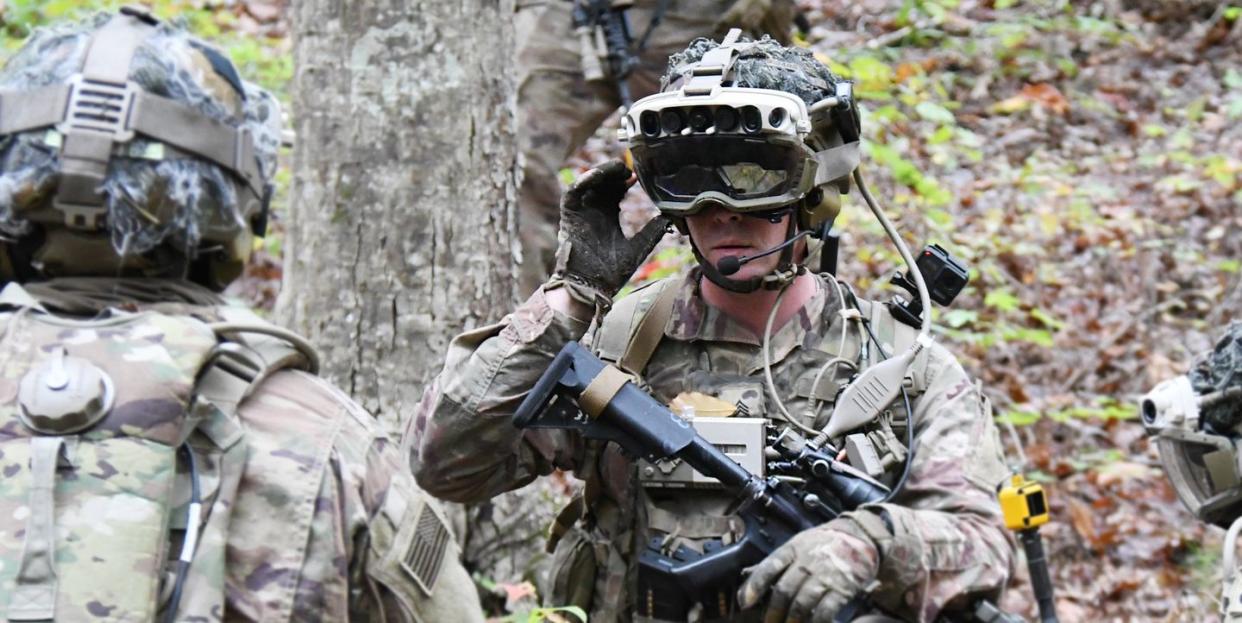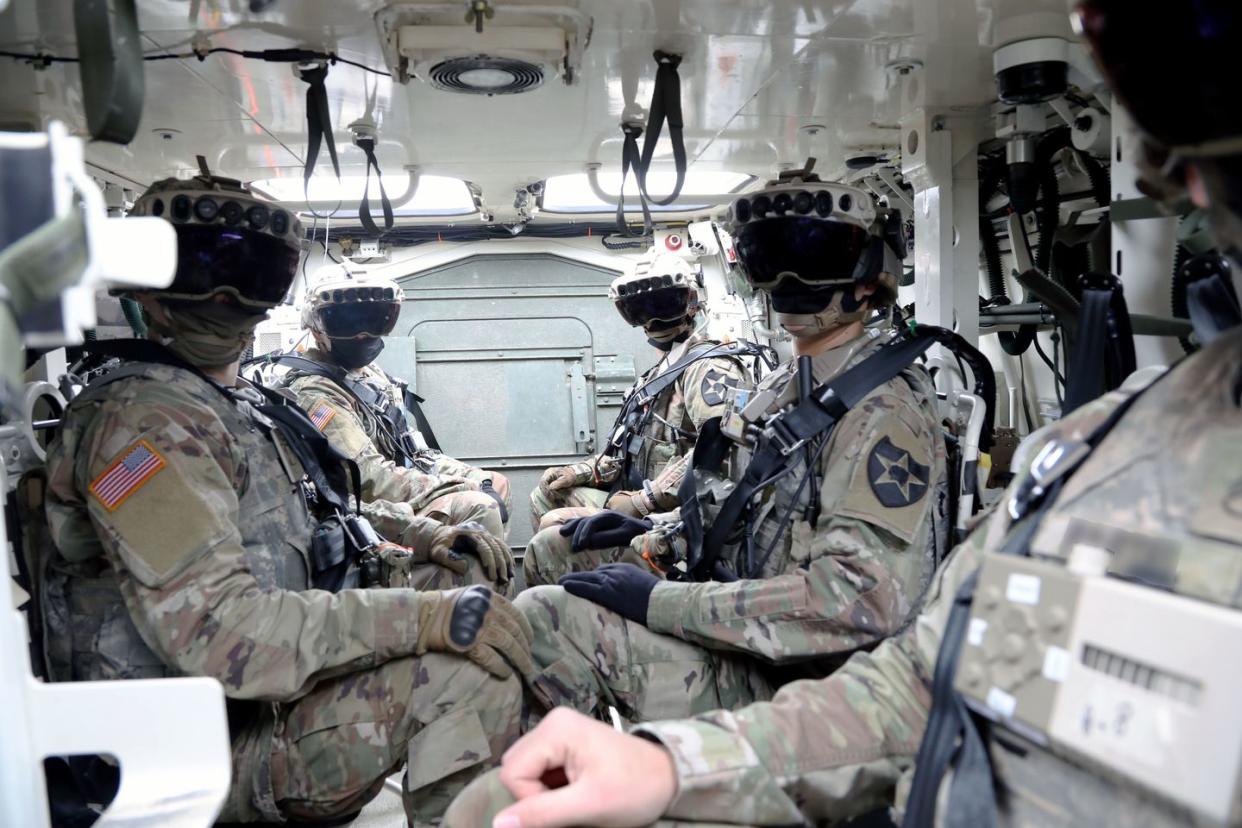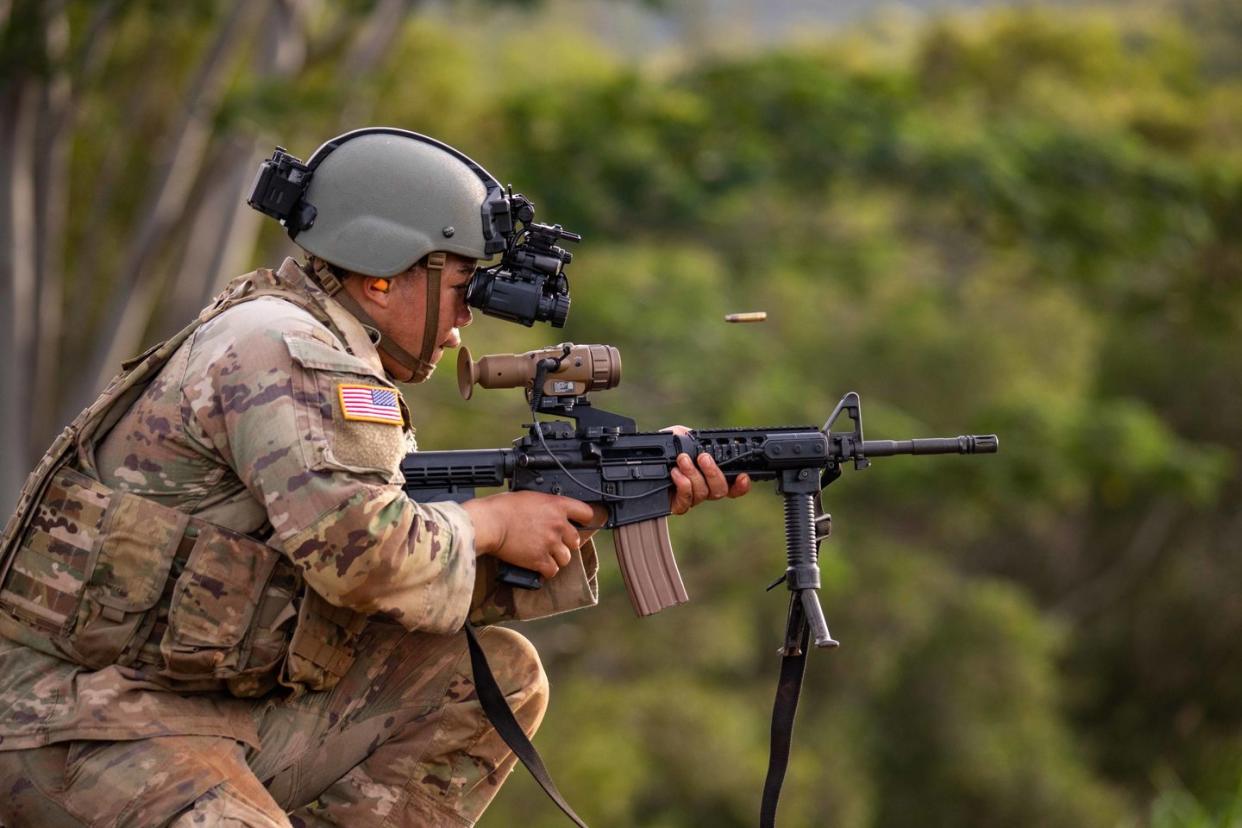The U.S. Army Is Using Augmented Reality Goggles To Make Soldiers Better at Close Combat

The U.S. Army has received its first set of IVAS augmented reality combat goggles.
The IVAS system allows soldiers to see and share data with one another, as well as see outside vehicles, in real time.
The system, based on Microsoft’s Hololens, is years late and over budget.
The U.S. Army has received the first of tens of thousands of augmented reality goggles designed to make soldiers more effective in close combat. The Integrated Visual Augmentation System (IVAS) uses augmented reality to project data in a soldier’s field of view, including maps, enemy positions, key friendly positions, and other information. The service wants up to 120,000 sets of goggles, but Congress is skeptical the service actually needs that many.
✈️ Don’t miss any of our best-in-class military and defense coverage. Join our squad.
The most technologically neglected branch of the fighting forces—and yet by far the most numerous—is the infantry. Known as the “Queen of Battle,” the infantry takes and holds ground that others branches merely bomb, shell, and strafe. Yet while the last hundred years have seen repeated revolutionary developments in tanks, fighter planes, and ships, infantry troops have missed out on most of this action. The typical modern infantryman goes into battle with a checklist of equipment similar to his or her predecessor’s a century earlier.

The U.S. Army thinks IVAS is the technological leap the infantry needs to fight in the 21st century. IVAS, built around Microsoft’s HoloLens augmented reality (AR) goggles, packs a lot of capability into a relatively compact set. IVAS includes a ruggedized heads-up display, cable, computer pack (known as the “puck”, wearable battery, squad radio, and power charger.
What Soldiers See Through IVAR Goggles
Much like the heads-up display of a fighter jet, IVAS goggles project critical information into a soldier’s field of view. Soldiers with IVAS can see the positions of others in their squad or platoon, designated pathways across the battlefield, enemy positions, and other data. They can also receive feeds from nearby night vision devices, including low-light and thermal sighting systems. Soldiers can “see” through the walls of the vehicles they are riding in by accessing cameras mounted on the vehicle’s hull, or view the feed from drones flying over the battlefield. IVAS will even allow soldiers to properly identify enemy forces at a distance, using night vision, using Advanced Targeting & Lethality Aided System (ATLAS).
The Army, according to Janes, has begun accepting the first 5,000 of up to 120,000 IVAS headsets, with a total cost of $21.88 billion over ten years. Congress, which oversees the multi-billion dollar program, thinks that the service might actually be buying too many. 120,000 headsets are more than enough to outfit soldiers on the pointy end of the spear: infantry, armor, cavalry, special operation forces, combat engineers, and so on.
Furthermore, the Army is fielding the Enhanced Night Vision Goggle – Binocular (ENVG-B), a next-generation set of image intensification night vision goggles that not only provide stereoscopic night vision but can wirelessly connect to night vision sights mounted on weapons. A soldier with the ENVG-B package could, for example, raise a weapon over a wall, aim at a target, and open fire—all without exposing him or herself to enemy fire.
The Army, as Breaking Defense reported in July, was so excited about IVAS it actually zeroed out funding for ENGV-B in the 2023 service budget. After all, you can only wear one of these fancy headsets at a time. This was despite reports from field testing that made their way to Congress that troops didn’t think everyone on the battlefield needed IVAS. Congress, with the power of the purse, directed the Army to try “mixed-equipping” units with both IVAS and ENVG-B.

IVAS is the most revolutionary tech to hit the infantry since night vision, and it’s too bad that this game-changing tool has to battle it out with night vision for a place in the Army’s budget. The two systems arguably complement one another, with IVAS a command and control tool for leaders and the ENVG-B a sensor and aiming system for weapons. One thing is for sure: no army in the world fields either such system, and the U.S. Army has the luxury of choice.
You Might Also Like
